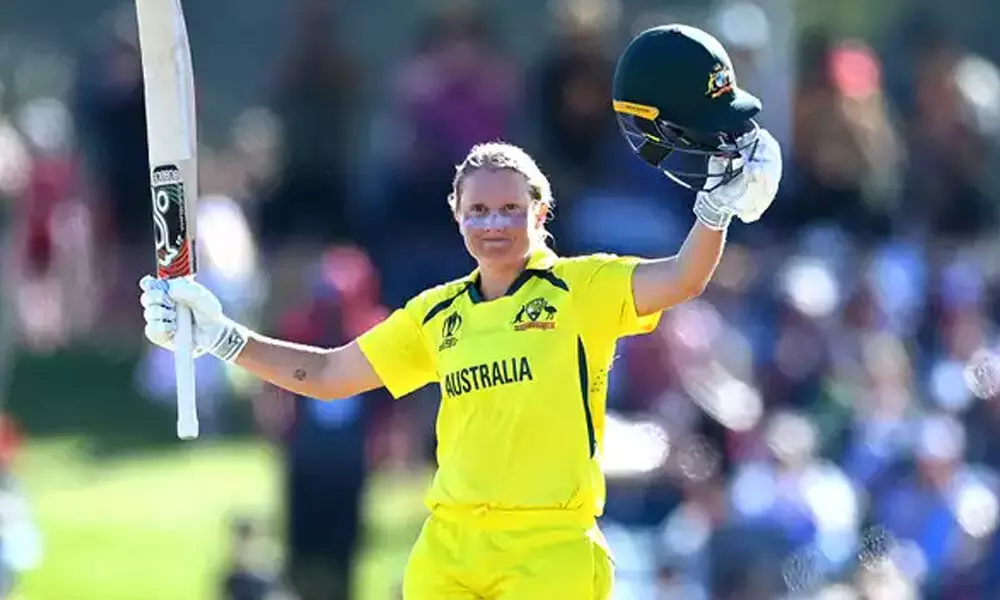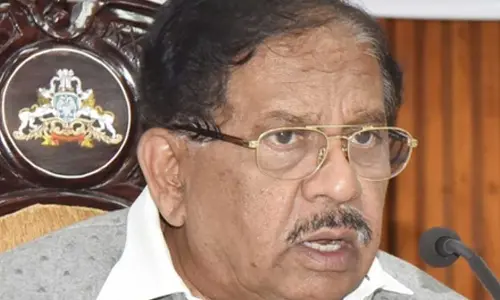Australia beats England by 71 runs to win Women's World Cup

Semifinal against West Indies was blueprint for my success in final: Alyssa Healy
Alyssa Healy produced a milestone innings in a tournament that may be transformative for women's cricket as Australia beat England by 71 runs on Sunday to win the Women's Cricket World Cup for the seventh time.
CHRISTCHURCH: Alyssa Healy produced a milestone innings in a tournament that may be transformative for women's cricket as Australia beat England by 71 runs on Sunday to win the Women's Cricket World Cup for the seventh time.
Healy struck 170 from 138 balls as Australia reached 356-5 to toss aside any notions that women's limited-overs cricket is in any way staid or lacking in spectacle.
Nat Sciver then produced an innings of almost equal quality, reaching a century from 90 balls to give hope to what seemed a hopeless England run chase. Sciver was 148 not out when England's last wicket fell at 285 in the 44th over. While she was at the crease, Australia's total seemed attainable.
Healy's was the highest and Sciver's the third-highest individual scores in a men's or women's ICC World Cup that made clear this final was one of the best ever in a cricket World Cup.
"That was pretty special from our group, something that we've been working towards for a long period of time," Healy said. "Everyone's been talking about it for a long time so to get over the line was great.
"We knew England was peaking at the right time and you never know what's going to happen. Full credit to the bowlers, they held their nerve. Nat Sciver played a tremendous innings, I thought she might have got them over the line but it was just a great game of cricket."
More than 86,000 fans attended when Healy made 75 from 39 balls as Australia beat India in the final of the Women's T20 World Cup in March 2020.
The crowd was much smaller this time but still near capacity at Hagley Oval and the ripples of Sunday's match may radiate wide as women's cricket grows and its move towards equality with the men's game gains pace.
The women and young girls who wore the jerseys of their favourite players or clamoured for autographs at the final were only a small indication of the new generation this World Cup, broadcast to an unprecedented global audience, may have inspired.
Healy helped demonstrate how far the women's game has come since England won the first World Cup in 1973 when the players wore white pleated skirts and knee socks and the seven competing teams included Young England and an International XI.
Through 31 matches over 30 days the 2022 tournament produced cricket of the highest calibre, with 11 centuries, four innings of 300 or more and many thrilling finishes in the final over.
Healy's innings, which followed her 129 in Australia's 157-run semifinal win over the West Indies, represented a higher level of performance for its command, the range of her shots and the power with which she struck the ball.
The creation of women's professional T20 leagues, especially the Australian Big Bash leagues, has seen the budding of numerous new batting talents and Healy's innings was its fruition. She reached her century at a run a ball and added her next 70 runs from only 38 deliveries. In total, she hit 26 fours, many through or over the offside as she stepped away to leg and planted her feet firmly for leverage.
Healy put on 160 for Australia's first wicket with Rachael Haynes who made 68. The opening pair put on 216 in the semifinal in which Haynes made 85.
It was hard at the end of the Australian innings to believe that Healy and Haynes both were cautious at first as they found the pace of a fresh pitch. They scored only 37 runs during the 10 over powerplay.
From then on the scoring rate climbed steadily and rapidly: Australia was 92-0 after 20 overs, 131-0 at the midpoint of the innings. England's spirits almost visibly faded as Australia added 224 more in the second half of the innings, as its bowlers seemed powerless to slow the flow of runs.
Beth Mooney followed Haynes and rushed to a half-century from 38 balls, eventually falling for 62. The last five overs yielded three wickets but no respite.
England began its innings needing more than seven runs per over to win. Captain Heather Knight spoke before the match of England writing its own remarkable story in the final and that certainly would have been the case had it achieved a world-record run chase to win back to back finals.
Sciver almost made it happen but England lacked partnerships and Australia proved too strong. It came into the tournament as the top-ranked team and favourite and won all eight games on the way to the final. England lost its first three games and faced elimination but won five straight in virtual knockout circumstances to reach the final.
"Healy's was the best innings I've ever seen live," Knight said. "We couldn't really find an answer.
"Nat was remarkable, absolutely remarkable, the skill against spin and seam. It was unfortunate we couldn't have anyone stay with her."














